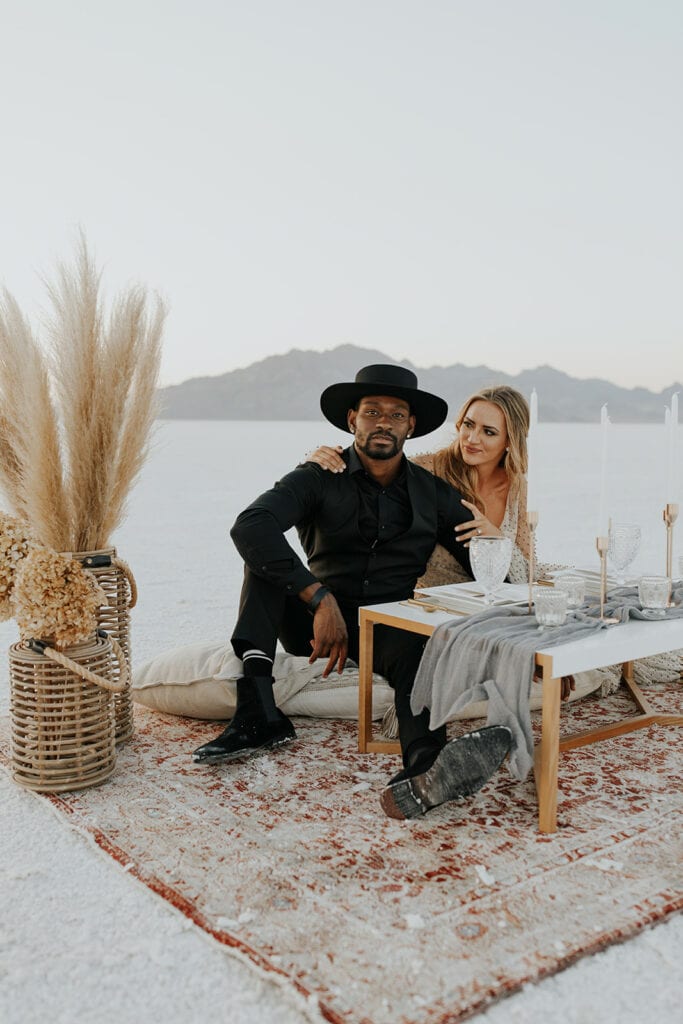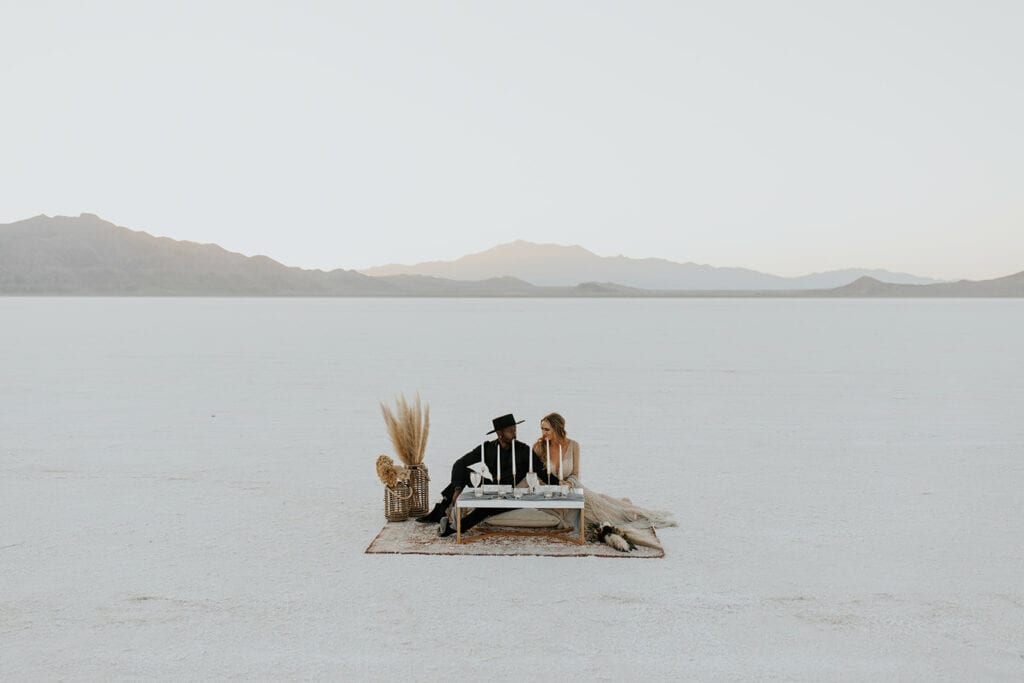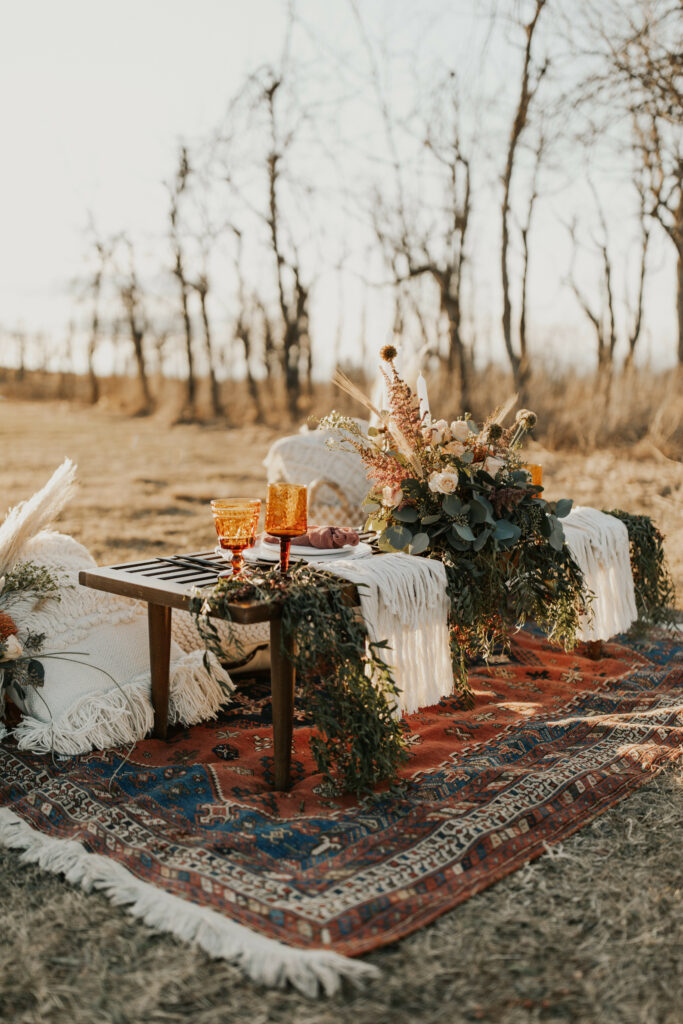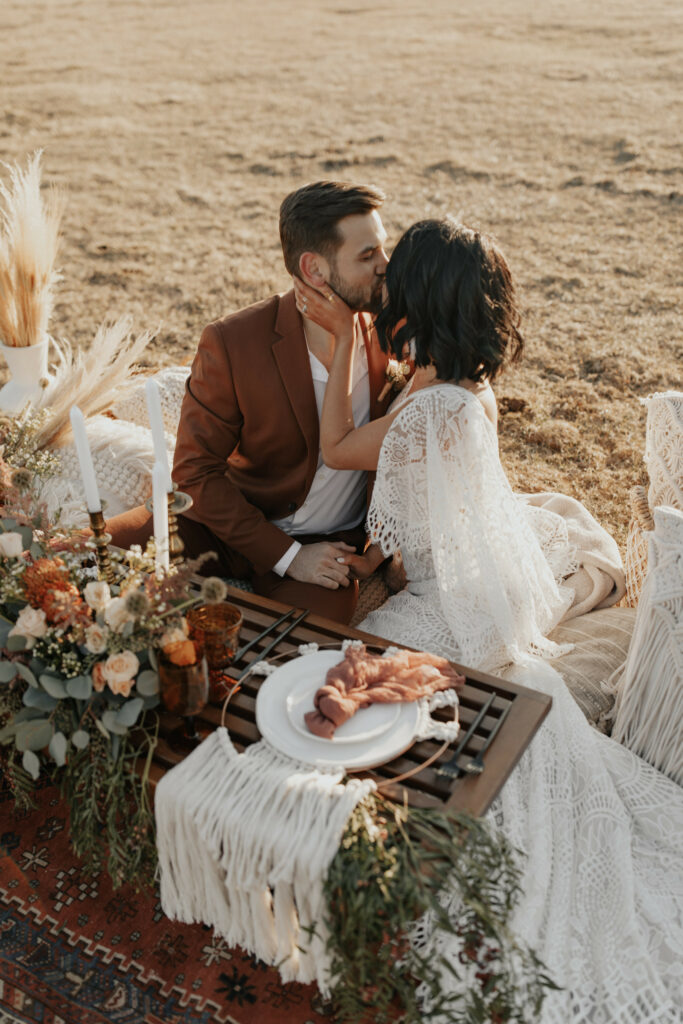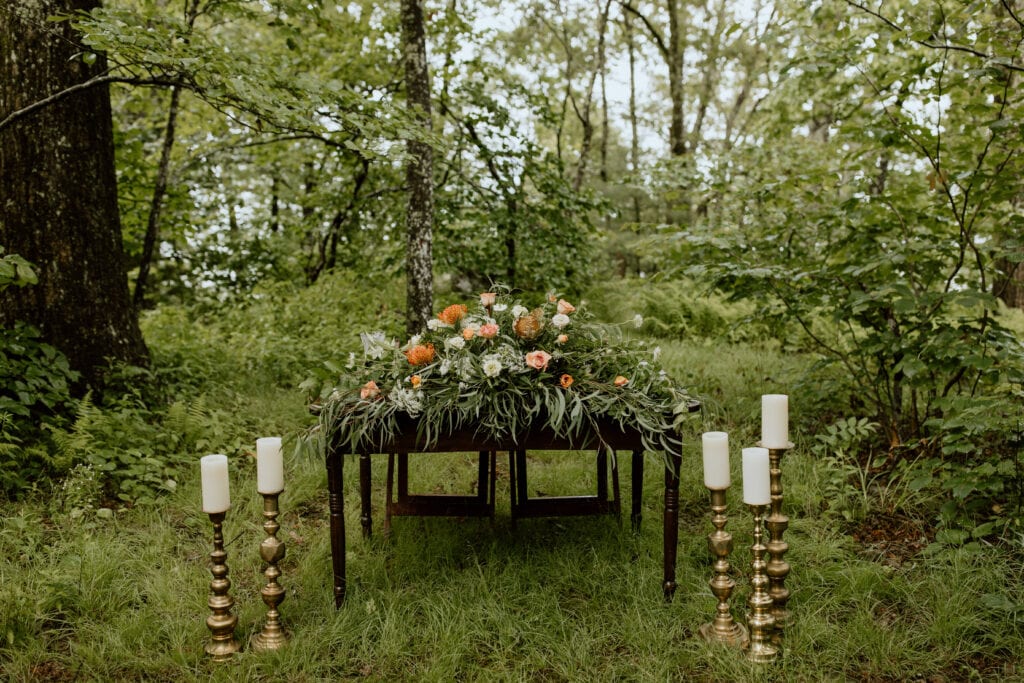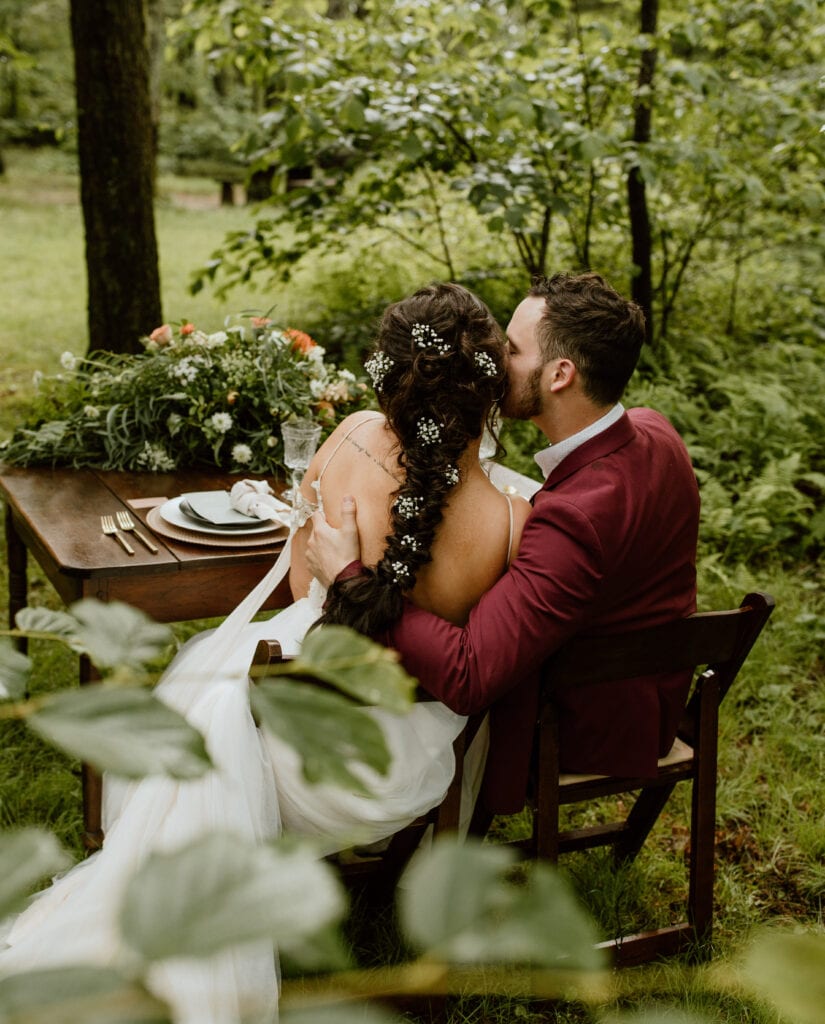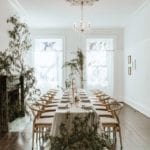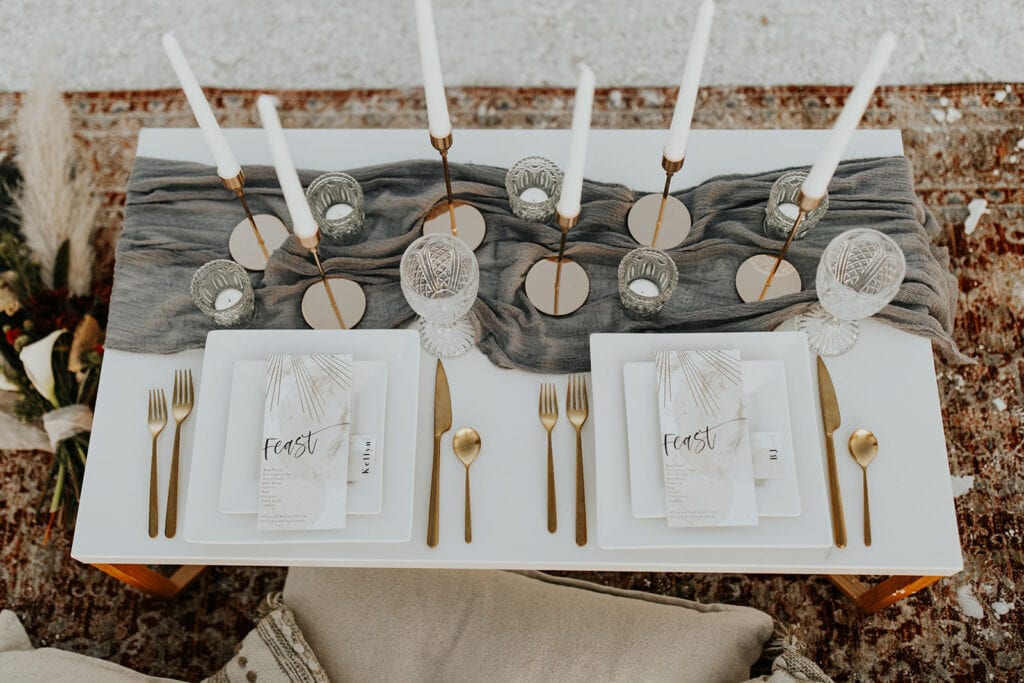
Whether you’re having an elopement for just the two of you or an intimate wedding with a handful of guests, no celebration is complete without a killer tablescape. First up, create a theme by choosing an item you know you want to incorporate—for instance, if you’re set on incorporating pampas grass, you’re clearly on a path to boho-dom; crystal stemware means something delicate and romantic, perhaps with a close knit group of friends; and clear acrylic chairs lend themselves nicely to a chic, monochromatic look with a bold color palette and minimal dinnerware.
Then, if you’re like me, this is where things get a little lost.
So I tapped elopement planner Sydney Herring of Wildly in Love, who’s created dreamy tablescapes for couples in places ranging from the Shenandoah Mountains to the Bonneville Salt Flats in Utah, for her insight. Here are her three expert tips for creating a tablescape.
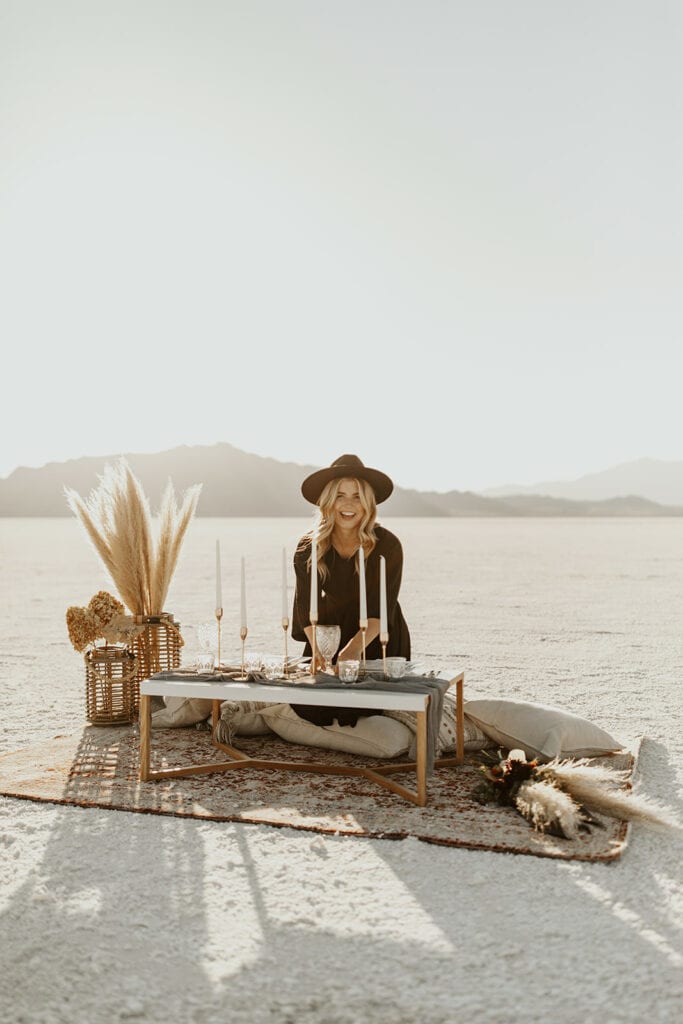
1. Design with Intention
“I believe that it’s all in the details, so add elements on purpose. Don’t just throw things on a table and hope it looks good—find pieces that balance each other,” says Herring. For instance, if there’s a lot of color going on with the florals, she suggests using a neutral fabric such cheesecloth to complement the lively tones. (Traditionally used for making cheese, cheesecloth is a beige, gauzy material that’s beloved by the boho set in many aspects of decorating. Plus, it’s cheap.) Or, if you have a super elaborate and funky base plate, Herring suggests balancing it with a more neutral plate on top, or simple flatware.
If you’re going for a sleek monochromatic look in, say, all white, you might consider white and cream roses (the cream add depth—see #2, below); white taper candles, china, and linens; and classic crystal stemware. To break up all this white, sprinkling in delicate greenery.
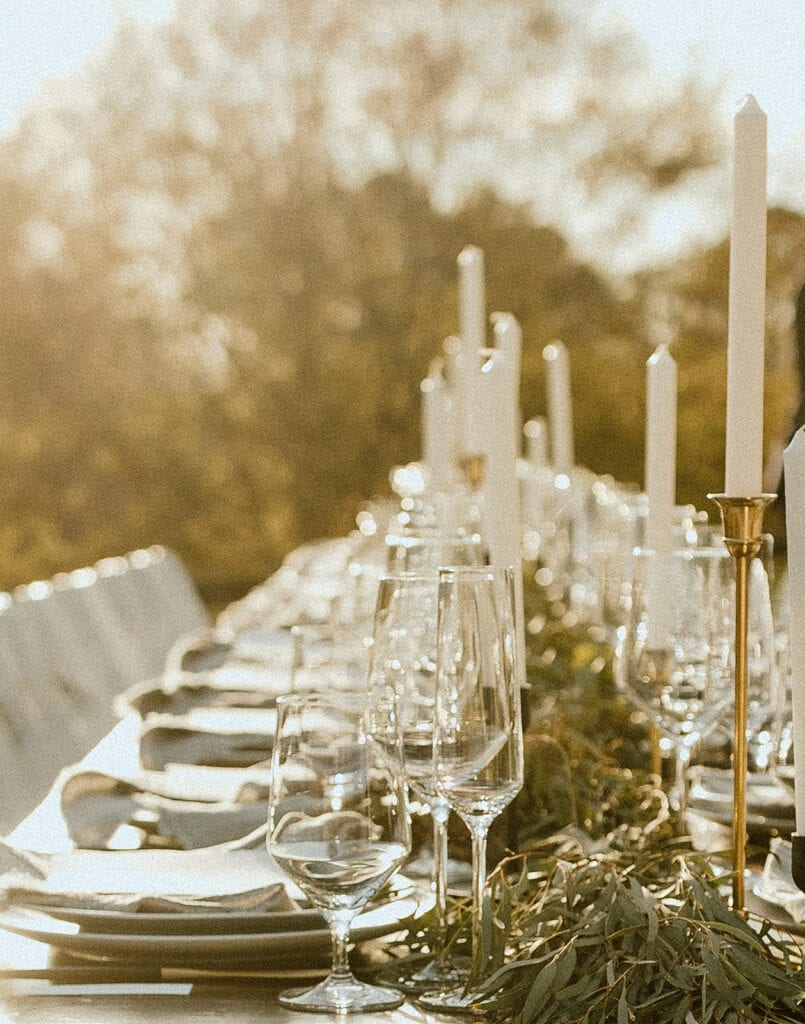
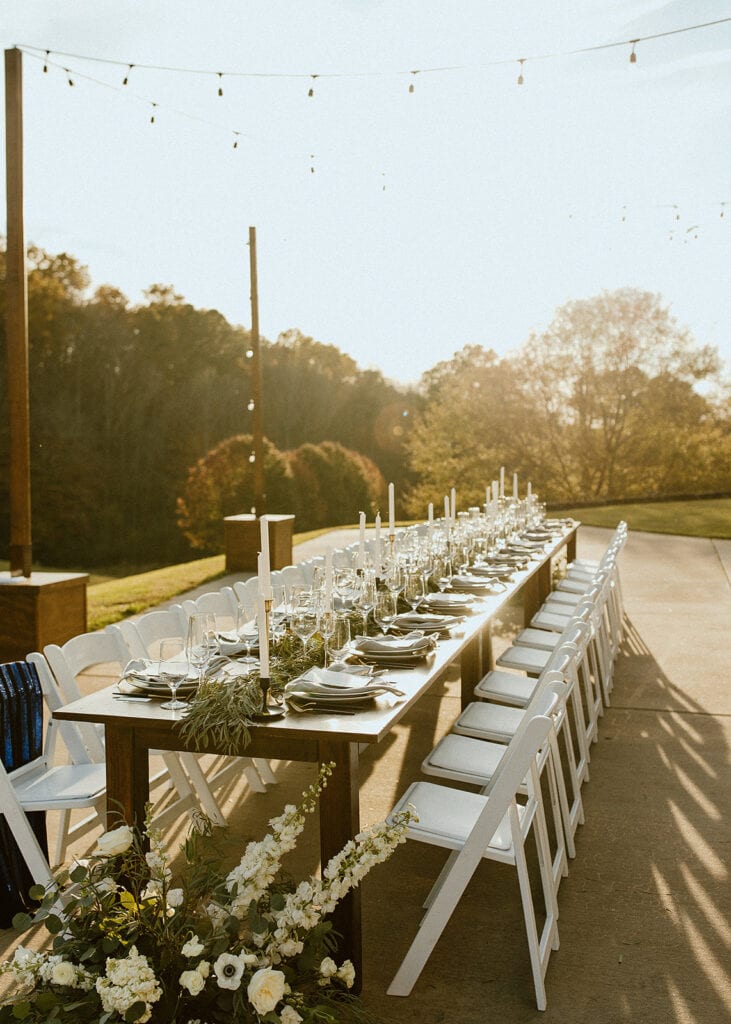
2. Create Dimension
Why are pictures of tablescapes just so dang pleasing to look at? It’s all about layering, which creates dimension (and therefore great photos). Herring recommends finding pieces to add height, such as taper candles; textures to create depth in the design, such as the aforementioned gauzy cheesecloth, or crinkled cloth napkins; and colors to make certain elements pop, like the flatware, any paper items, and florals.
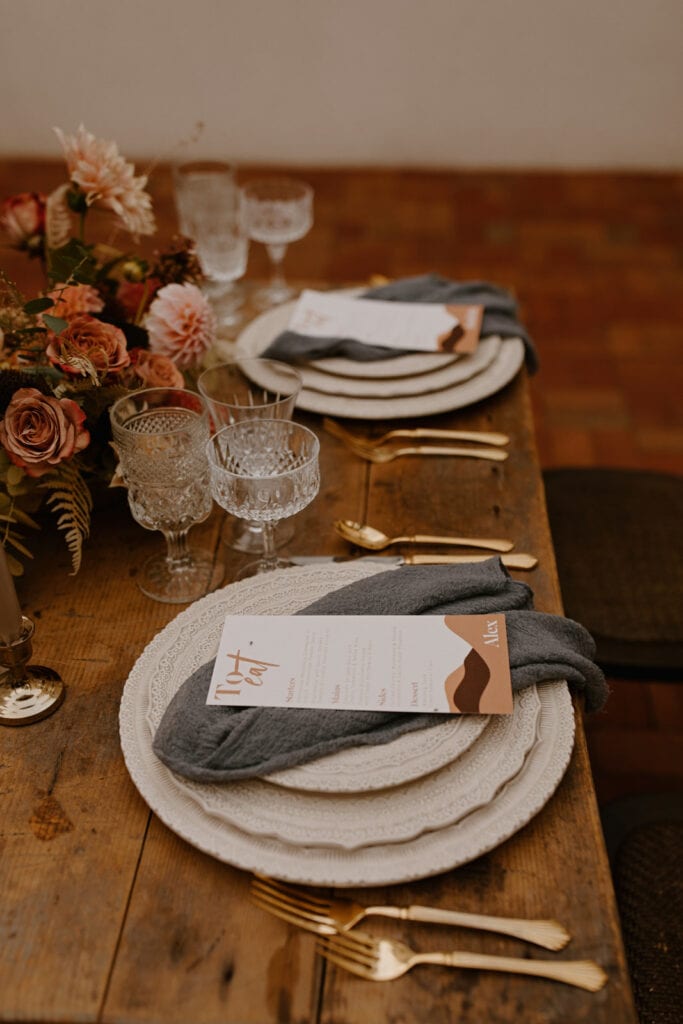
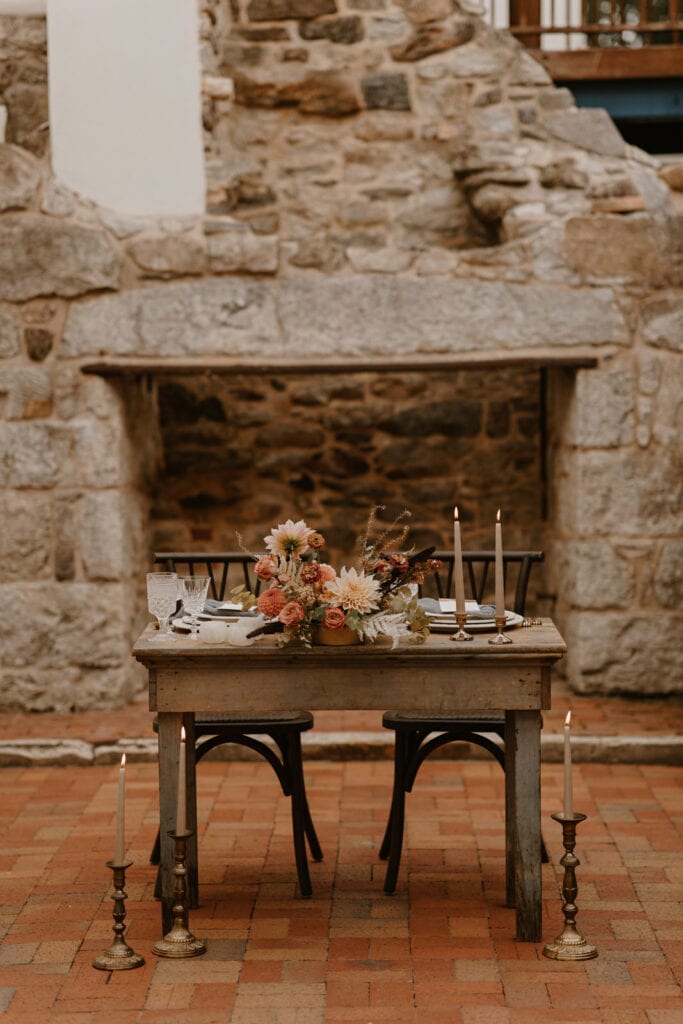
3. Get Creative
“There’s no real ‘rule book’—mess around with placement, colors, and items in the tablescape,” says Herring. “Not every tablescape has to have florals, which is typically a design staple.” Instead, bring in natural elements that would enhance the overall theme—seashells for a more beachy vibe, coconuts or palm leaves for a tropical vibe, or that trusty pampas for, really, an anything vibe.
